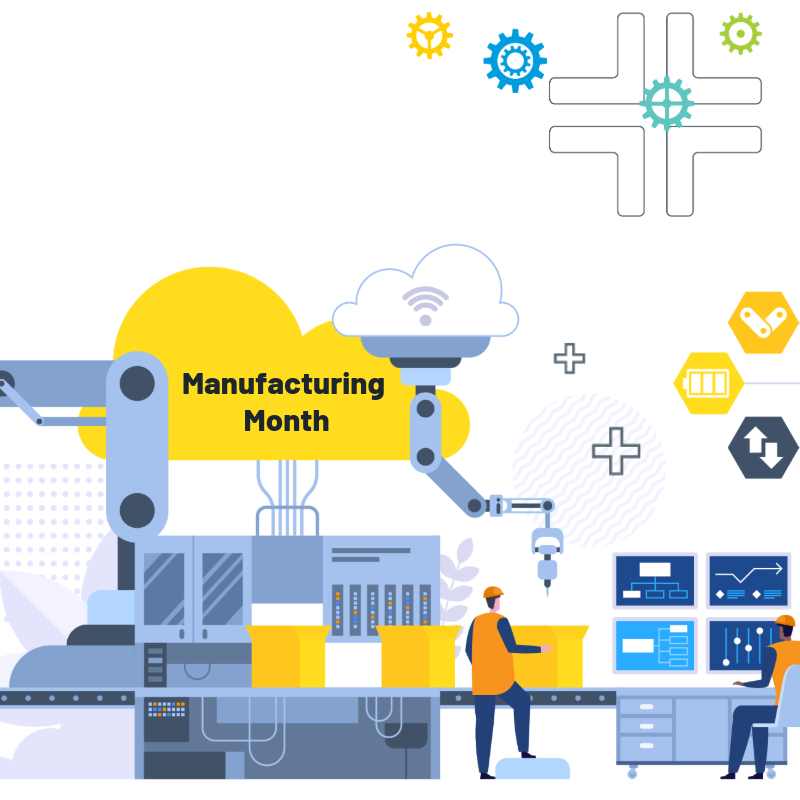October is Manufacturing Month: a time to recognize and promote the innovators, creators and problem-solvers who power one of the most vital industries in our economy. At Withum, we are proud to stand alongside manufacturers and their providers across the country, helping leadership teams navigate both today’s challenges and tomorrow’s opportunities.
Shaping the Manufacturing Landscape of Tomorrow
As we look toward 2026 and beyond, it’s clear that despite shifting economic conditions and a dynamic trade environment, the manufacturing sector has momentum and opportunity. The industry is undergoing a transformation that requires foresight, adaptability and sound decision-making from leaders and executives. Through our work with sector-leading manufacturing businesses, we have consistently heard three themes shaping planning discussions: the rise of artificial intelligence (AI) and technology integration, ongoing supply chain disruptions and strategic mergers and acquisitions (M&A) activity reshaping the landscape. Let’s dive in and break down what this means for your manufacturing business.
1. AI and Technology: Redefining the Factory Floor
Artificial intelligence is no longer just a buzzword – it’s rapidly becoming a core driver of competitiveness in manufacturing. From predictive maintenance and quality assurance to demand forecasting and robotics in production, AI is enabling companies to streamline operations and enhance efficiency at scale. These developments are coming at a critical juncture, as manufacturers face a rapidly aging skilled labor force – the ‘do it the way we’ve always done it’ approach is no longer an option.
For businesses, the challenge lies in not just adopting technology for the sake of doing so, but in aligning investments with long-term strategy. Considerations around data governance, workforce upskilling and cybersecurity move to the forefront – not just as IT issues, but critical considerations across the C-Suite. Cloud-based ERP systems, IoT-enabled production lines and AI-driven data analytics are transforming how decisions are made and how factories operate. Manufacturers who embrace this digital-first mindset will be better positioned to positively impact margins and deliver on customer expectations in an increasingly competitive global market. The resulting challenge for executives requires ensuring the balance of investment, impact and change management are appropriately managed to minimize disruption and maximize return.
2. Supply Chain Disruptions: Building Resiliency for the Long Term
While supply chain pressures have eased somewhat since the height of the pandemic, disruptions remain a constant reality. Geopolitical tensions, labor shortages, material scarcities and climate-related events continue to introduce volatility into global sourcing strategies, but the largest impact and concern heading into 2026 is focused on the dynamic global tariff environment and its impact on trading.
For many manufacturing businesses, the path forward involves balancing efficiency, resilience and diversification. Nearshoring and reshoring remain hot topics, as companies reassess the risks of dependency on overseas suppliers. Diversification of geographic sourcing has also been at the forefront of procurement discussions. For multinationals, tariffs are upending transfer pricing and global tax minimization strategies. Investment in supply chain visibility tools is also growing, giving leaders the real-time data they need to make agile decisions when markets shift unexpectedly.
Lessons learned from the past five years are yielding significant investments in infrastructure and technology aimed to build a more efficient, adaptable, supply chain. Building this resiliency is a defining factor in long-term success.
3. M&A Activity: Consolidation and Growth Opportunities
The manufacturing sector is starting to see a significant pickup in M&A activity after interest rates and tariffs uncertainty has dampened activity in the middle market over the past couple of years. M&A activity is being driven by a mix of public company acquisition, strategic consolidation and private equity investment. Whether acquiring for advanced capabilities, access to a new geography or vertical, or divesting non-core assets, many companies are using M&A as a lever to accelerate transformation and growth. Others view core M&A strategy as an engine to positively impact cost of manufacturing, seeking markets with more skilled labor and access to transformation hubs in light of rising inputs.
Looking ahead, we expect this trend to continue, as there is an abundance of three critical factors – available capital, buyers seeking innovative growth engines and owner-operated businesses looking for a way to take the next step. This environment creates both opportunity and complexity. Valuation, due diligence, tax implications and cultural and technological integration are all critical considerations for leadership teams navigating a transaction.
Partnering for the Road Ahead
Manufacturing Month is about honoring the progress of the past and preparing for the future. Leaders in this space face decisions that will shape not only their organizations but also the broader economy and communities they serve. As we move into 2026 and beyond, one thing is certain: manufacturers will continue to be a significant engine of our economy and those who continue to embrace the innovative mindset will keep their businesses competitive and thriving in a global landscape. Withum is proud to support at every step of the way.
Contact Us
Manufacturers are reimagining what’s possible. Withum’s Manufacturing and Distribution Services Team works alongside industry leaders to navigate complexity, identify opportunities, and make confident decisions.






